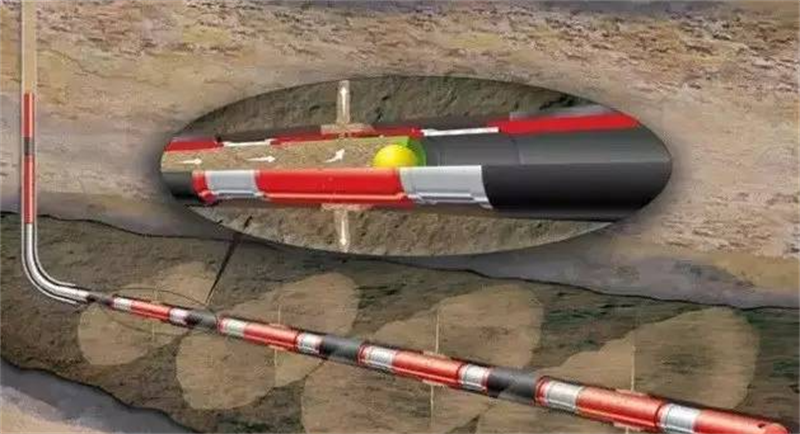Oil and gas well increase productio technology is a technical measure to improve the production capacity of oil wells (including gas wells) and the water absorption capacity of water injection wells. Commonly used methods include hydraulic fracturing and acidification treatment, in addition to downhole explosions, solvent treatment, etc.
1) Hydraulic fracturing process
Hydraulic fracturing involves injecting high-viscosity fracturing fluid into the well at a large volume that exceeds the absorption capacity of the formation, thereby increasing the bottom-hole pressure and fracturing the formation. With the continuous injection of fracturing fluid, the fractures extend deeper into the formation. A certain amount of proppant (mainly sand) must be included in the fracturing fluid to prevent the fracture from closing after the pump is stopped. The fractures filled with proppant change the seepage mode of oil and gas in the formation, increase the seepage area, reduce the flow resistance, and double the production of the oil well. “Shale gas”, which is very popular in the global oil industry recently, benefits from the rapid development of hydraulic fracturing technology!
2) Oil well acidification treatment
Oil well acidification treatment is divided into two categories: hydrochloric acid treatment for carbonate rock formations and soil acid treatment for sandstone formations. Commonly known as acidification.
►Hydrochloric acid treatment of carbonate rock formations: Carbonate rocks such as limestone and dolomite react with hydrochloric acid to generate calcium chloride or magnesium chloride that is easily soluble in water, which increases the permeability of the formation and effectively improves the production capacity of oil wells. Under the temperature conditions of the formation, hydrochloric acid reacts very quickly with rocks, and most of it is consumed near the bottom of the well and cannot penetrate deep into the oil layer, affecting the acidification effect.
►Soil acid treatment of sandstone formation: The main mineral components of sandstone are quartz and feldspar. The cements are mostly silicates (such as clay) and carbonates, both of which are soluble in hydrofluoric acid. However, after the reaction between hydrofluoric acid and carbonates, calcium fluoride precipitation will occur, which is not conducive to the production of oil and gas wells. Generally, sandstone is treated with 8-12% hydrochloric acid plus 2-4% hydrofluoric acid mixed with soil acid to avoid calcium fluoride precipitation. The concentration of hydrofluoric acid in soil acid should not be too high to avoid damaging the structure of the sandstone and causing sand production accidents. In order to prevent adverse reactions between calcium and magnesium ions in the formation and hydrofluoric acid and other reasons, the formation should be pretreated with hydrochloric acid before injecting soil acid. The pretreatment range should be larger than the soil acid treatment range. An authigenic soil acid technology has been developed in recent years. Methyl formate and ammonium fluoride are used to react in the formation to generate hydrofluoric acid, which acts inside the high-temperature oil layer in deep wells to improve the soil acid treatment effect. Thereby improving the production capacity of oil wells.
Post time: Nov-16-2023









 Room 703 Building B, Greenland center, Hi-tech development zone Xi’an, China
Room 703 Building B, Greenland center, Hi-tech development zone Xi’an, China
 86-13609153141
86-13609153141


